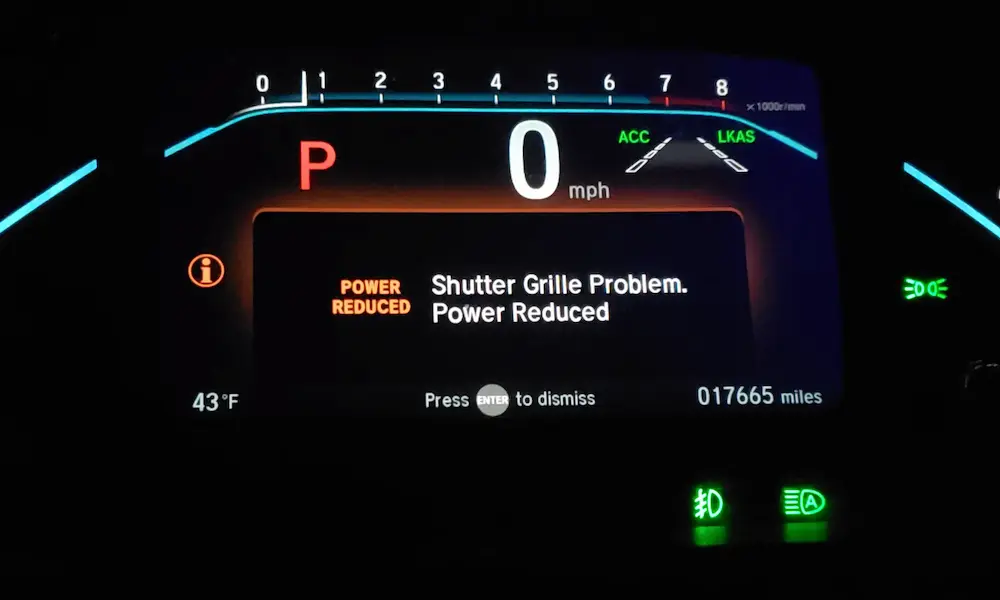Looking to change your Honda CR-V fuel filter? You might be wondering where to find it. The fuel filter for the 2014 Honda CR-V is typically located in the compartment access area. Keeping this part clean and well-maintained ensures your car runs smoothly. This guide will help you find it easily and explain why this simple task can make a big difference for your vehicle.
Understanding the Fuel System in Your Honda CR-V
Your Honda CR-V’s fuel system is crucial for providing the engine with the necessary power. Learn about its components, the role of the fuel filter, and how a clogged filter can impact your car’s performance.
Components of the Fuel System
A Honda CR-V’s fuel system includes various components that work together to deliver fuel efficiently. The fuel tank stores the gasoline, which is then pumped by the fuel pump through the fuel lines. The fuel pressure regulator maintains the appropriate fuel pressure needed for optimal engine performance. Once the fuel reaches the fuel injectors, it’s sprayed into the engine’s combustion chamber. These components ensure a smooth driving experience, offering balanced fuel delivery and engine efficiency.
Role of the Fuel Filter
The fuel filter is a key part of keeping your CR-V’s engine healthy. It removes dirt and contaminants from the fuel before it reaches the fuel injectors. This process helps maintain proper fuel pressure and engine performance.
Replacing the fuel filter regularly, as per your owner’s manual, prevents clogging and ensures effective fuel flow. Some models have an external fuel filter for easier maintenance, while others may have it integrated within the fuel system.
Symptoms of a Clogged Fuel Filter
A clogged fuel filter can lead to several noticeable issues. You might experience difficulty starting the engine, or the engine may stall during operation. A drop in fuel pressure can cause poor acceleration and power loss. In some cases, the check engine light or a fuel filter warning light can indicate a potential problem, possibly due to a faulty filter sensor or foreign particles in the fuel. Addressing these symptoms promptly can prevent more serious problems and keep your vehicle running smoothly.
Locating the Fuel Filter in Your Honda CR-V
When you need to locate the fuel filter in your Honda CR-V, knowing where to look and how to safely access it is essential. It’s important to focus on safety and the specific location of the fuel filter to ensure a smooth replacement process.
Accessing the Fuel Filter
The fuel filter in many Honda CR-V models, like the 2014 version, is situated underneath the vehicle near the fuel tank. To reach it, you will need to lift the car, which can be done using a jack or a lift. Once the vehicle is raised, you may notice an access panel close to the fuel tank.
To access the fuel filter, remove this panel carefully. You’ll find the fuel filter connected within the fuel pump assembly. Be prepared with the right tools, such as wrenches, to disconnect the connections securely. It’s crucial to handle O-rings gently to avoid leaks when putting everything back together.
Safety Precautions
Safety should always come first. Before you start, make sure the car is on a level surface and securely supported on jack stands. This step ensures that the vehicle won’t accidentally slip or fall while you work underneath it. It’s also wise to wear safety goggles and gloves to protect yourself from fuel spills and debris.
Ensure the engine is turned off and cool to prevent any hazards from hot parts. Keep an appropriate fire extinguisher nearby just in case. Properly ventilate the area to avoid inhaling fuel fumes, and take care to avoid open flames during the process. Your safety is as important as locating the fuel filter.
How to Replace Your Honda CR-V Fuel Filter
Replacing the fuel filter in your Honda CR-V is important for maintaining vehicle performance. This guide will help you through the process with the tools needed and step-by-step instructions.
Tools Required for Replacement
When replacing the fuel filter, it’s crucial to have the right tools on hand. You’ll need a set of wrenches, particularly a 14mm flare wrench, which is essential for managing the hardline connections. A jack or vehicle lift is helpful, as the filter is located near the fuel tank. You might also want some penetrant oil to loosen any stubborn bolts during the process. Additionally, an oil catch pan can be useful to manage any spills. Make sure to have new O-rings when installing the new filter to ensure a proper seal. This will help prevent any potential leaks once you’re done.
Step-by-Step Replacement Process
First, you’ll need to safely lift your vehicle to access the fuel filter. Make sure the car is stable before proceeding. Locate the fuel filter under the car near the fuel tank. Using your flare wrench, carefully loosen the hardline connections on each side of the filter. Be cautious of any fuel that might spill out during this process. Take out the old filter and dispose of it properly.
Next, install new O-rings as needed to ensure a leak-free connection. Attach the new fuel filter by aligning it with the existing fuel lines. Tighten the hardline connections securely but avoid over-tightening, which might cause damage. Once everything is in place, lower the vehicle carefully and ensure all tools are removed from underneath.
Connecting the New Fuel Filter
After installing, double-check that the new fuel filter is correctly connected. Look over the connections for any signs of misalignment or leaks. Ensure all connections are tight and the O-rings are correctly seated. It’s a good idea to start the engine and check for any fuel leaks around the filter area.
Keep an eye on it for the first few days to ensure everything is working properly. Following the manufacturer’s recommended service interval for replacement will help maintain optimal vehicle performance. Regular checks can help you spot potential issues early, saving you time and trouble in the long run.
Maintenance Tips and Best Practices
Proper maintenance of your Honda CR-V’s fuel system ensures efficient engine performance and longevity. Focus on regular service intervals, checking fuel pressure, and keeping the system clean to maintain peak performance and fuel efficiency.
Regular Service Intervals
Regularly checking and replacing the fuel filter can greatly enhance the lifespan of your engine. For a Honda CR-V, the fuel filter should generally be replaced every 75,000 miles. This helps maintain optimal fuel flow and prevents contaminants from affecting engine performance. By following the recommended service interval, you can avoid potential clogs that might lead to poor mileage or performance issues.
Having a schedule for servicing is key. You can create a simple list or table to track when maintenance tasks are due.
Checking Fuel Pressure
Ensuring the correct fuel pressure is crucial for keeping your engine operating smoothly. If fuel pressure is too low, the engine might not run efficiently, affecting its overall performance. To check the fuel pressure, use a fuel pressure gauge after warming up the engine. Monitoring this aspect of your vehicle can prevent sudden breakdowns and help maintain consistent performance levels.
Perform regular checks, especially if you notice signs like engine stalling or difficulty starting, to address issues before they escalate.
Keeping the Fuel System Clean
A clean fuel system can prevent many common vehicle issues. Regularly using a fuel system cleaner can help remove deposits and impurities in the engine. This practice not only boosts engine performance but also helps in better mileage. Ensuring the fuel system is free of contaminants is part of essential maintenance that can prevent costly repairs.
You can find specialized cleaners at automotive stores designed for Honda CR-Vs, which you use as part of your regimen. Regular cleaning will support smooth engine function and extend its lifespan.














